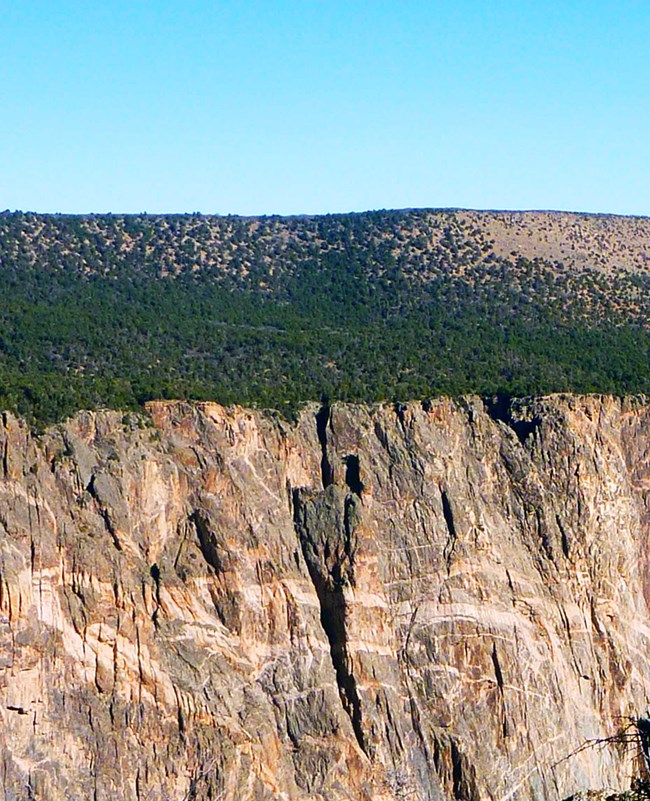
NPS photo Mesozoic means “middle life” - this era lasted from 285 to 70 million years ago. In our 1,000 page book, the Mesozoic Era is pages 956-987 and encompasses how dinosaurs lived and died, birds evolved from reptiles, and the first primitive mammals appeared. At the downstream end of the Black Canyon, you might see a thin strip of pink or yellow rock at the very lip of the north side of the canyon. This is Entrada Sandstone, which formed when a massive stack of sand dunes covered much of this region. Hike the North Vista Trail to come in close contact with these rocks. The Morrison Formation is one of the most widespread and easily recognized rock formations in the Southern Rocky Mountain and Colorado Plateau regions. Its strata (beds or layers) contain iron oxide and other minerals responsible for the red and green colors, which makes the Morrison Formation so easy to identify. It is also renowned for its dinosaur fossils! During the Jurassic (within the Mesozoic), the Colorado landscape looked quite different than it does today. The climate was moist and teeming with vegetation -- possibly like today's Amazon Valley. The soft sandstones and interbedded mudstones that characterize the Morrison were deposited in shallow lakes and by streams and rivers that would occasionally escape their banks and flood the surrounding lowlands. Fossilized remains of dinosaurs and other Mesozoic life provide important clues which help us understand the environment and the creatures that lived near these ancient lakes and streams. Over the next several thousand years, the inland sea deepened and expanded, swallowing Colorado and much of the Southwest. Near-shore beach deposits gave way to offshore marine deposits of soft, black mud. This mud accumulated to great thicknesses. Over time, the mud turned to soft rock and is now called Mancos Shale.This soft, dull, grey formation often alters to a yellowish hue and forms smooth slopes or rounded mounds where exposed. As you hike along the Warner Point Nature Trail, look for this sandstone layer towards Montrose. The "hummocky" topography give the Mancos Shale a sand dune-like appearance. |
Last updated: August 3, 2020
